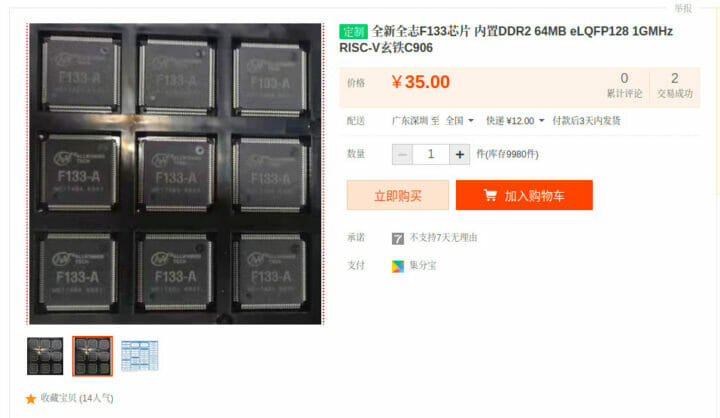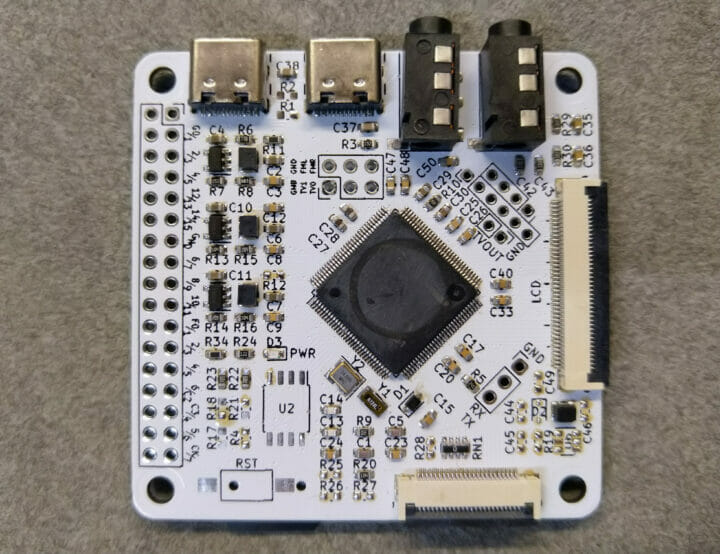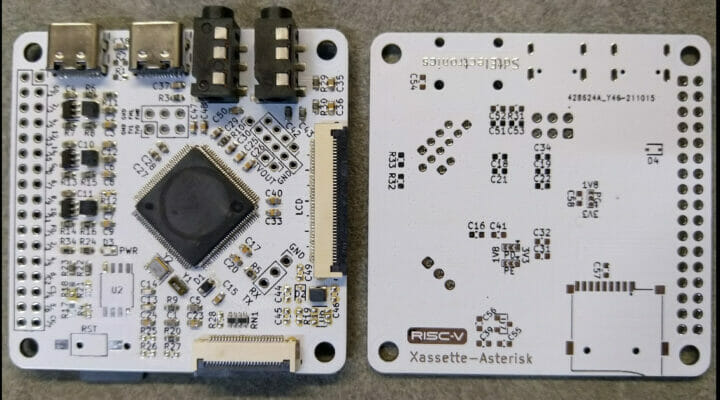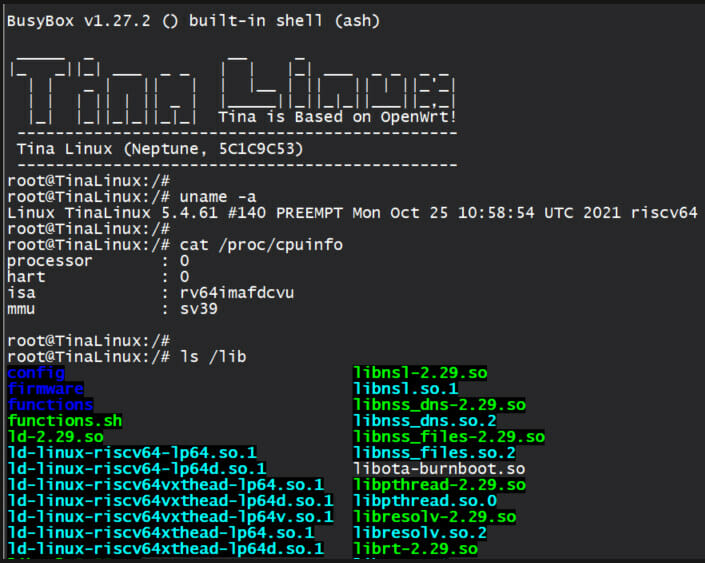We covered Allwinner D1s RISC-V processor with 64MB built-in RAM a few days ago, and we’ve just found out about Xassette-Asterisk, an open-source hardware board based on the processor that runs Linux (OpenWrt) and is said to cost less than $10 to make.
This is significantly cheaper than the Allwinner D1 based Nezha RISC-V Linux SBC currently sold for a little over $100, a rather poor value. The cheaper board will not quite have the same applications with just 64 MB RAM and no HDMI, but it could be great for projects requiring a camera and/or a display, audio interfaces, plus some I/Os.
Xassette-Asterisk specifications:
- SoC – Allwinner D1s single-core 64-bit RISC-V processor @ 1.008 GHz with 64MB DDR2
- Storage – MicroSD card slot, 32 MBit SPI flash (W25Q32 – U2 on the board)
- Display I/F – 40-pin LCD connector, 6-pin touch panel interface, backlight power
- Camera I/F – 24-pin MIPI CSI connector
- Audio – 3.5mm headphone+mic jack, 3.5mm Line-in jack
- USB – 1x USB Type-C OTG port, 1x USB Type-C host port
- Expansion – 34-pin GPIO header which should include SPI, I2C, UART, PWM, DAC, ADC, IR Tx, R, as well as power signals (5V, 3.3V, and GND)
- Debugging – 3-pin UART header for serial console
- Misc – Reset button
- Power Supply
- 5V via USB-C port
- 3.3V via pin header (note: USB ports won’t work with this method)
- Dimensions – 56 x 56mm (2-layer PCB layout)
Some of the chips, the Reset button, and the microSD card socket are missing from the photos above, but we should expect those to be soldered to the board in the final version. You’ll find the KiCad and PNG schematics on Github. I used that to derive the specifications myself since they were not published at the time of writing this article.
There’s no software on that repository, but the Hackaday.io project shows the boards running the OpenWrt based Tina Linux with kernel 5.4.61, and Whycan has documentation and the SDK for Allwinner D1/D1s/F133 RISC-V processors.
The open-source hardware Allwinner D1s board is not for sale, so you may be better off waiting for MangoPi-MQ1 SBC that’s expected to become available next month on Taobao and Seeed Studio, and an expected price tag of around $10. If you’d like to build your own board, Allwinner D1s (aka F133) processor is sold for 35 RMB (or about $5.5) in single units on Taobao. I had to register with a mobile number to access the page, so here’s a screenshot for your reference.
 Thanks to dgp and Jon for the tips.
Thanks to dgp and Jon for the tips.

Jean-Luc started CNX Software in 2010 as a part-time endeavor, before quitting his job as a software engineering manager, and starting to write daily news, and reviews full time later in 2011.
Support CNX Software! Donate via cryptocurrencies, become a Patron on Patreon, or purchase goods on Amazon or Aliexpress







